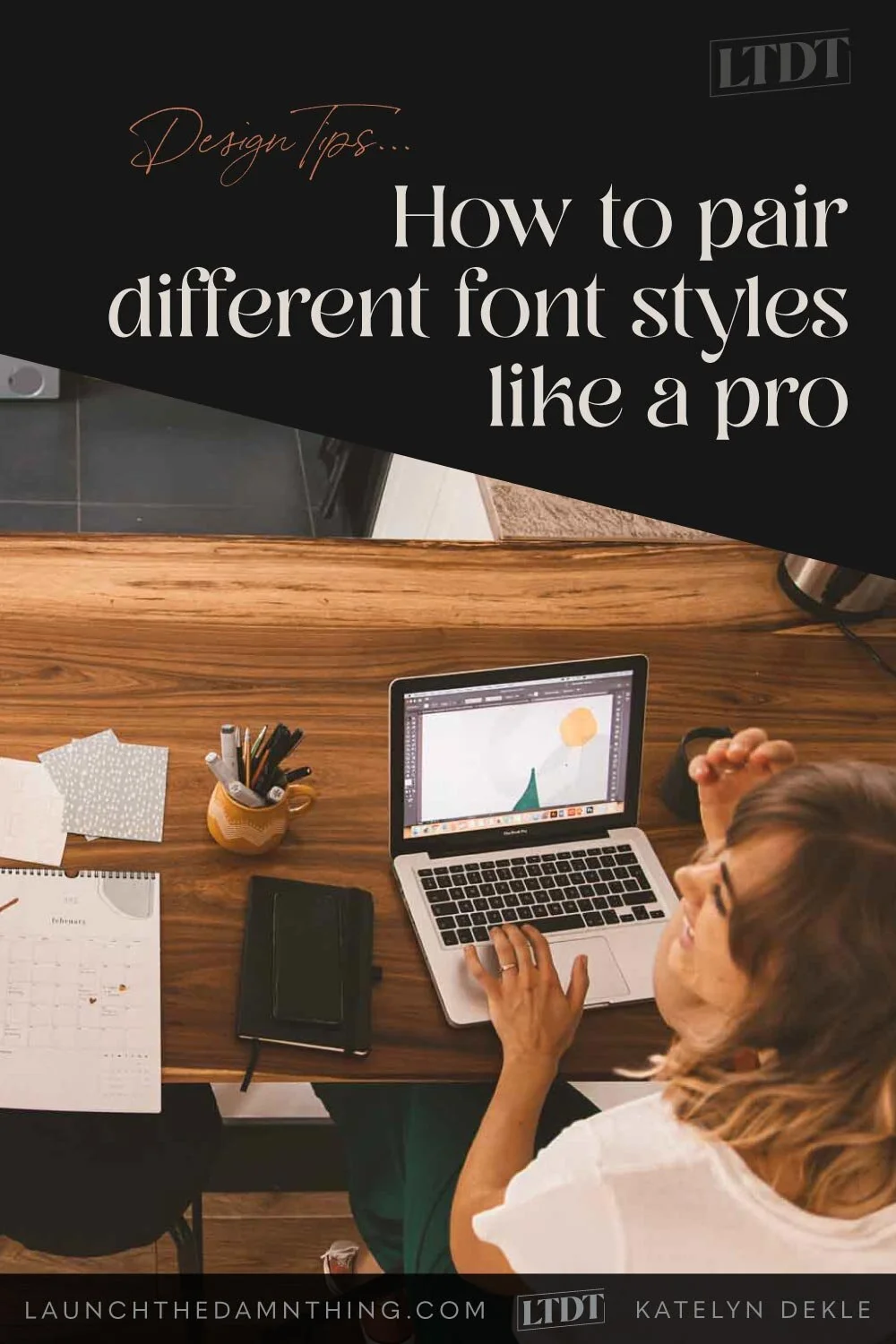How to pair different fonts
Table of Contents Show
Using one font throughout a document can be visually monotonous, right?
But how do you know which ones go together and which ones don't?
Do you see gorgeous font combinations other people have done, but when you make an attempt yourself, it never looks right?
Today I'm going to give you a few tips on how to pair different fonts and what not to do! Whether it's in your Powerpoint, your resume or images for social media, you can choose like a pro too.
The 'how' is simple if you understand the the basic rules of thumb used.
How to identify (& avoid) overused font styles
DON’T
We're not in grade school writing a research paper for English class, so we can be a little more creative with the text in our documents!
So let's first tackle what NOT to do!
Please just don't use any of these, –for reasons:
• Bradley Hand
• Brush Script
• Comic Sans
• Curlz
• Giddyup Std
• Lucida Calligraphy
• Lucida Handwriting
• Marker Felt
• Papyrus
They may seem unique (and they may very well be, to you), but they're not unique in the design and business world. In fact, they've become too common and are now considered part of the worst-offender category.
They probably come stock on your personal computers because they are they the most basic and common fonts in their own category (hand writing, script, calligraphic, western, girly, kid friendly, etc.).
READ MORE: Want to know why Microsoft Word never really works to submit layout or design ideas to a designer?
Covering some font style basics
Why aren't standard fonts like Garamond or Helvetica in that worst-offender list too?
Good question!
Some of these (like Garamond or Helvetica) typically come stock on most computers too, but notice their style category.
They're not overly decorative or overly anything, so they've become classics. These classics like Baskerville, and Futura, don't go out of style, because they aren't so trendy. They don't fit a niche style like western (ex. Giddyup), or kid-friendly (ex. Comic Sans).
Classics work well in many different styles of design, so they are always good to use.
A few quick factoids, to prove this point (they’ve been around longer than you think!):
Baskerville was designed in 1757 by John Baskerville in Birmingham, England
Garamond was designed by a 16th century French engraver
Helvetica was designed in the late 1950's by a Swiss typeface designer
READ MORE - Choosing the Right Font (Part 1)
How do I choose complimentary font styles?
Let me first note that I am using the word "pair" here.
While there's not a general rule for how many different types of fonts you can use in the same document, the standard is just 2 or 3.
Designers rarely use more than 2 or 3 fonts in the same document. Otherwise, it can become visually confusing to read through, loses consistency and stability, and in some cases even legitimacy or professionalism.
The main idea is that opposites attract.
You already know this is applicable in many different situations, –and typography is no different.
If your main font is a Sans Serif style, then choose a Script font to pair it with. If you're starting with something Bold, then choose something Light or Italic to compliment it. Started with Big? Then add something Small. It can even be different weights within the same font family (Helvetica Ultra Light vs. Helvetica Black, etc.).
Here are some examples for those of you who are visual learners (like me!):
The examples shown are very basic. No specific fonts are named so you just get the general idea, without seeing too much detail or too much information at once.



